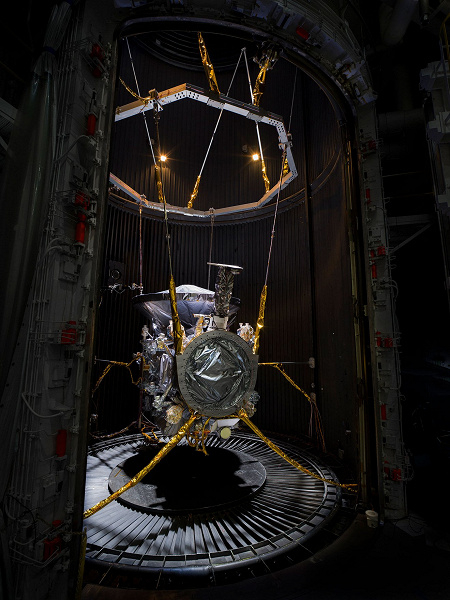Launch window opens October 10th
In less than six months, NASA intends to launch the Europa Clipper probe on a 2.6 billion kilometer journey to Jupiter's moon – Europe. From the vibrations of a rocket to the extreme heat and cold of outer space and the radiation of Jupiter, this journey will be full of challenges. The spacecraft recently completed a series of rigorous tests at the agency's Jet Propulsion Laboratory (JPL) to ensure it is up to the task.
These tests simulated the environment that the spacecraft would encounter, exposing it to vibrations, cooling, airlessness, electromagnetic radiation, and other conditions.
«These were the last critical tests», — said mission project manager Jordan Evans of JPL. «Our engineers conducted a thorough and complex set of tests to put the system to the test. We found that the spacecraft is capable of operating in the conditions that will exist during and after launch. The system performed very well and performed as expected».
The final test of the Europa Clipper was one of the most difficult and lasted for 16 days. The probe is the largest NASA has ever built for a planetary mission, and one of the largest objects to fit into a thermal vacuum chamber measuring 26 by 8 meters. Inside the camera — an almost perfect vacuum, which simulates the environment of airless outer space.
At the same time, engineers subjected the equipment to the high temperatures that the side of Europa Clipper facing the Sun would encounter. The light of powerful lamps reflected from a massive mirror recreated the heat that the spacecraft would endure.
To simulate the path from the Sun, the lamps were darkened, and the tubes in the walls of the chamber were filled with liquid nitrogen to create conditions that simulated the space environment. The team then assessed whether the spacecraft could heat up using 500 temperature sensors.
TVAC (Thermal Vacuum Chamber) represents the culmination of environmental testing, which includes a series of tests designed to ensure correct operation between electrical and magnetic components.
Europa Clipper has also undergone vibration, shock and acoustic testing. During vibration tests, the spacecraft was shaken repeatedly, as would happen during liftoff on a SpaceX Falcon Heavy rocket. During the impact tests, pyrotechnics were used to simulate the explosive shock the spacecraft would receive when separated from the rocket to begin its mission. Finally, acoustic testing has confirmed that the Europa Clipper can withstand launch noise levels that can cause hardware damage.
«There is still some work to be done, but we are moving in the intended direction towards a timely launch», — Evans said. «The fact that the tests were so successful— a huge positive result and allows us to relax a little».
Later this spring, the spacecraft will travel to NASA's Kennedy Space Center in Florida. There, teams of engineers and technicians will make final preparations for the mission's launch. The launch window for Europa Clipper will open on October 10th.
After launch, the spacecraft will go towards Mars. At the end of February 2025, it will approach close enough to the Red Planet to use its gravitational field and gain additional momentum. Then, the spacecraft will head back to Earth to receive another boost from our planet's gravitational field in December 2026.
After that, it will travel to the outer region of the Solar System and arrive at Jupiter in 2030. The spacecraft will fly around the gas giant and fly past Europa 49 times at a distance of 25 kilometers from its surface. The collected data will help scientists obtain more information about the water surface of the satellite.
The main scientific goal of the Europa Clipper mission — to find out whether conditions exist under the icy layer of Jupiter's satellite to support life. The mission's three main scientific goals include determining the thickness of the ice shell and its interaction with the ocean, studying the surface composition and geological features of the satellite. This mission's detailed exploration of Europa will allow scientists to better understand astrobiological potential beyond Earth.

